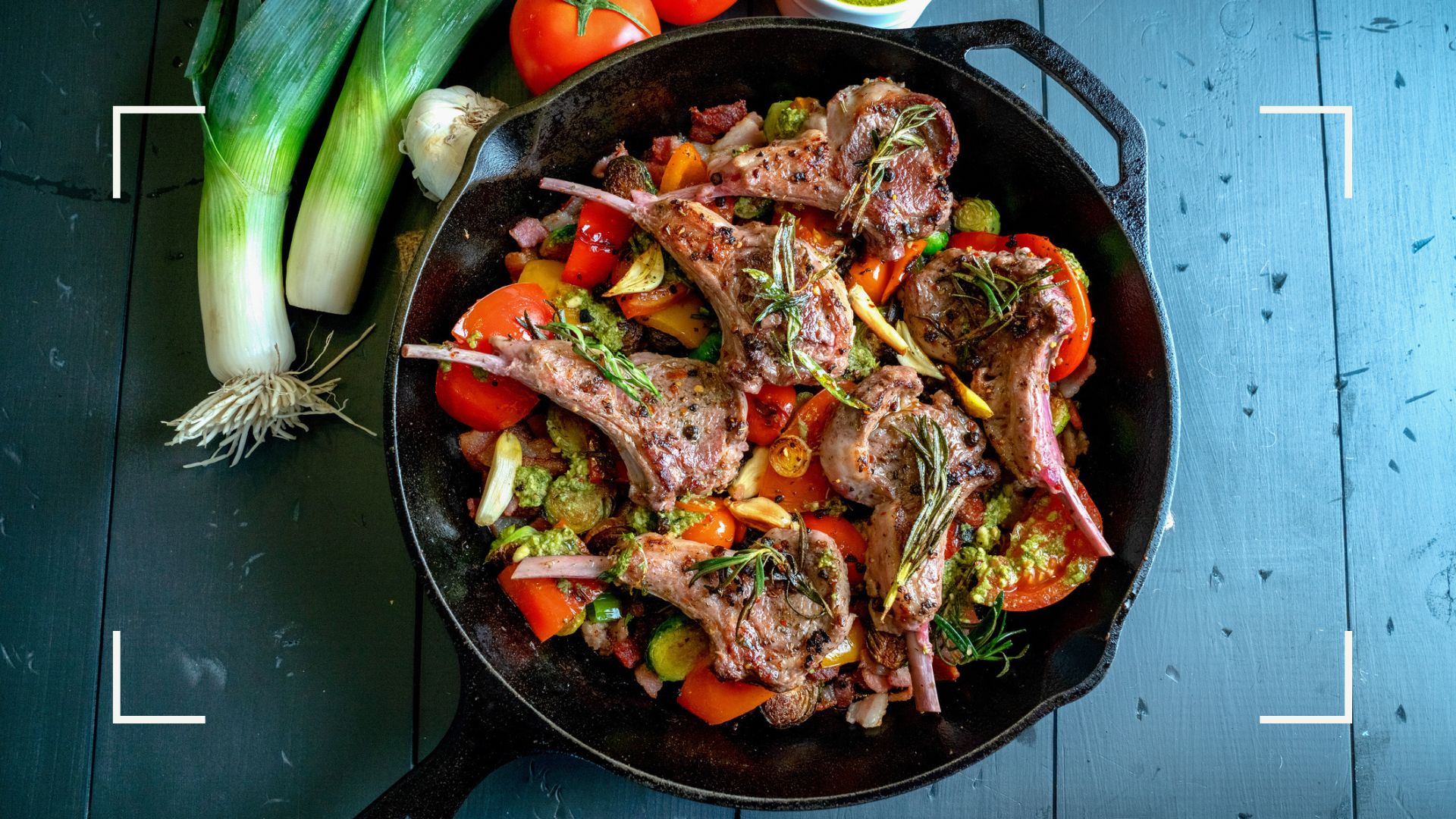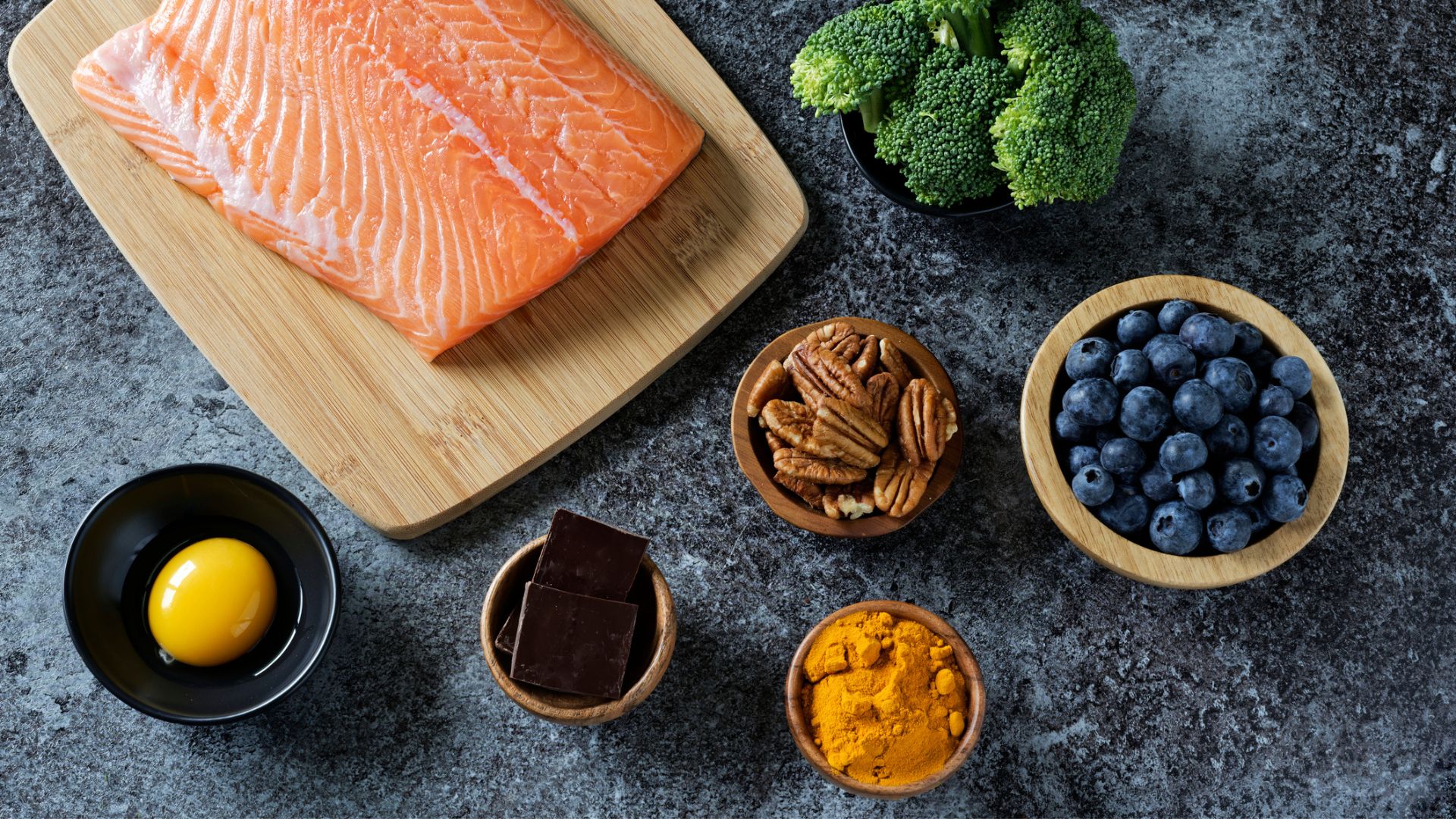The paleo diet - here's everything you need to know, including which foods to eat
Does the paleo diet have a space in modern nutritious eating?


The paleo diet revolves around the meals eaten by our hunter-gatherer ancestors millions of years ago. There's a huge focus on meat and fish, eggs, fruit and vegetables, nuts, seeds and other naturally-sourced ingredients that may have been available.
While the upsides of the diet - from the ease of finding ingredients to the reported health benefits - are numerous, there are also some reasons to give the paleo diet a miss. It's less restrictive than many of the traditional diets out there, but still requires you to cut some nutritional elements from your eating, which may not be suitable for everyone.
There's a big difference between paleo and some of the other natural eating plans like the Mediterranean diet for instance, so we spoke to nutrition experts to find out the historical origins of the plan, as well as which foods you can eat, and why it might be helpful for you, as well as the downsides to be aware of.
What is the paleo diet?
The paleo diet was designed to reflect our ancestors’ hunter-gatherer lifestyle, says Tamara Willner, a nutritionist at Second Nature who specializes in chronic illness prevention. "It involves eating only foods that would have been available before farming practices began, about 10,000 years ago," she says.
The idea for the paleo diet came from the belief that people were generally healthier in the paleolithic era, with lower rates of heart disease and type 2 diabetes - and it's thought these results could be replicated by modifying our modern-day diets.
"Although it remains unclear to researchers if it was their diet that was responsible for differences in health, or if it was due to other factors like the fact they spent more time outdoors and had higher fitness levels," Willner adds.

Which foods can you eat on the paleo diet?
The paleo diet is all about unprocessed foods, nutritionist Willner says. "These include lean meats, fish, fruits, vegetables, nuts, and seeds. It usually also means no dairy, grains, or legumes as these weren’t widely available at the time, and other foods that are off-limits are sugar, sweeteners, and vegetable oils," she explains.
Sign up to our free daily email for the latest royal and entertainment news, interesting opinion, expert advice on styling and beauty trends, and no-nonsense guides to the health and wellness questions you want answered.
"Some variations of the diet do allow for small amounts of grass-fed butter, and small amounts of wine and dark chocolate are also permitted."
The origin of groceries is also something to consider too. Josie Porter, the Doctify-reviewed dietitian at The Gut Health Clinic, points out that - to really eat like our ancestors - you'll need to opt for organic and grass-fed products. She adds, "You'll also need to avoid refined grains, as well as items containing trans fats, salt, and added chemicals." Some grains, such as ancient grains, which haven't been processed through hybridization or genetic modification, are permitted on the paleo diet.
Foods to eat on the paleo diet
- Grass-fed meats
- Fish and seafood
- Fresh fruits
- Fresh vegetables
- Eggs
- Nuts
- Seeds
- Natural oils, like olive, walnut, flaxseed, macadamia, avocado, coconut
Foods to avoid on the paleo diet
- Cereal grains
- Legumes (including peanuts)
- Dairy
- Refined sugar
- Potatoes
- Processed foods
- Overly salty foods
- Refined vegetable oils
- Candy/junk/processed food
- Artificial flavorings
Are there health benefits to the paleo diet?
1. It's a whole food diet
"There are benefits to consuming a more whole food diet," says nutritionist Jenna Hope. "This eating regime focuses on consuming real food and plenty of vegetables, meaning the paleo diet can support a wide range of nutritional requirements and it incorporates plenty of fiber to improve gut health."
Porter agrees that there's much that makes sense from a nutritional point of view. "We know that highly processed foods are not healthy when eaten in excess, as these are easier to digest and often contain added sugar, salt, and fats, while eating more whole foods, such as fruits, vegetables, nuts, seeds, and eggs, can be more nutritious," she explains. "It also helps that nutrients are obtained from fresh, organic, unrefined and unprocessed sources."

2. It could help improve your gut health
Cutting out anti-inflammatory foods could also help boost gut health. "The removal of a number of processed, or refined sugar-containing, inflammatory foods, and drinks, combined with the addition of a number of anti-inflammatory food items, may lead to improved gut health and overall improvement in markers of inflammation," explains Dr Kirstie Lawton, PhD, a registered nutritionist at the Institute for Optimum Nutrition.
Plus, she adds, "A lower refined carbohydrate diet may also have a positive impact on insulin resistance and blood sugar markers."
3. Sustainable weight loss
Additionally, the paleo diet might aid healthy, sustainable weight loss. "On the paleo diet you won’t be eating any processed foods, which are typically high in sugars, refined carbohydrates, fats, preservatives, and salt," says Willner. "These foods are rarely satiating, and by cutting out these foods we’ll become more aware of our natural hunger cues and be less likely to overeat."

4. May help manage type 2 diabetes
"Lower-carb diets have been shown to be effective for weight loss, as well as for managing type 2 diabetes," Willner says. "With a lower-carb diet, your energy levels are likely to be more stable throughout the day and you may find that you eat less."
What are the downsides of the paleo diet?
1. The premise may not actually exist
For starters, the healthy premise on which the paleo eating regime is based could be misguided. "The logic of the paleo diet is questionable," points out Porter. "After all, the life expectancy of our paleolithic ancestors is around the age of 35. It is likely the reason they have lower rates of disease is because they passed away before they could take place."
Also, as Willner points out, the health benefits could be down to other factors like a greater exposure to the benefits of vitamin D through the sun or more exercise. So if you're considering the paleo diet, be sure to incorporate all elements of healthy living into your eating plan.
2. It relies heavily on animal protein
Moreover, those living in the paleolithic period would have experienced extreme periods of famine before they were able to catch and slaughter an animal for food. During these periods, they would have eaten very little meat, and much more plant-based foods.
With that in mind, Darcy Lawler, nutritionist and co-founder of wellbeing platform Aegle, warns that modern paleo diets can often rely too much on animal protein. "Including vegan protein and plant proteins, nuts, seeds, and some higher protein vegetables is important," she explains.

3. It's restrictive
There's also the fact the paleo diet restricts certain food groups. "Cutting out grains and legumes can be detrimental to gut health in the long term," says Hope.
"Additionally, strict followers of this eating regime consume no dairy products either, and therefore this can increase the risk of nutritional deficiency if they're not replacing key nutrients such as iodine, calcium and vitamin D from other dietary sources."
You could also miss out on fiber and protein. "It involves avoiding legumes and whole grains," warns Willner. "These are good sources of fiber, complex carbohydrates, and protein and can definitely comprise part of a healthy diet."
4. You may need to take a supplement
Dr Carrie Ruxton, from The Health & Food Supplements Information Service, echos this sentiment and urges those who try the paleo plan to supplement their diet. "Given its avoidance of many healthy foods, there is a risk of nutrient deficiency. In particular of fiber, vitamin, and mineral shortfalls, like calcium in dairy foods, fiber and B vitamins in legumes and whole grains. Anyone following this diet should be recommended to take a multivitamin/multimineral supplement.”

Lauren is a freelance writer and editor with a decade of print and digital journalism experience. While she specialises in covering health and wellness topics - ranging from nutrition and fitness, to women’s health conditions and mental wellbeing - she has written across a diverse range of lifestyle topics, including fashion, beauty, homes, royals and travel.
In addition to writing for Woman & Home and sister title Homes & Gardens, Lauren's work has also been published by Women’s Health, The Times, Daily Telegraph, Elle, Cosmopolitan, The Guardian, Marie Claire, Body + Soul, Stylist, Glamour, Grazia, Red, Dazed Digital, Yahoo Life, The Sun’s Fabulous, Get The Gloss and Hello! among others.